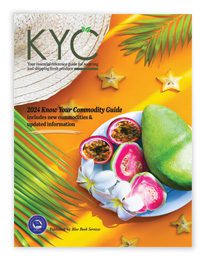Fennel Market Summary


Image: pratikastock/Shutterstock.com
Fennel Industry Overview
Originating in the Mediterranean coastal area, fennel (Foeniculum vulgare) was used by both the ancient Greeks and the Romans; the Greeks called it foeniculum, meaning “fragrant hay,” possibly for a scent similar to that of hay, and the Romans called it “Marathon” after the Battle of Marathon. The plant spread through Central Europe during the reign of Emperor Charlemagne and later to North America. Broadly speaking, two types of fennel exist—common fennel and Florence fennel. Common fennel is grown as an herb, while Florence fennel is grown as a vegetable. Common fennel, also known as sweet fennel or bronze fennel, can grow up to almost 7 feet tall and is distinguished by its yellow flowers, extensive taproot system, and licorice scent. While the foliage and seeds are harvested for cooking and other benefits, common fennel is also considered an invasive weed species in several states. With a texture similar to celery and fronds with a dill flavor, Florence fennel, also known by its Italian name finocchio, ranges in height from 1 to 5 feet. The base is a bulb, which is used along with the fronds and seeds in many culinary incarnations from breads in northern Europe and sausages in Italy to dishes in China and India. Fennel is often confused with anise (Pimpinella anisum); while both fennel and anise belong to the parsley family and share a similar licorice flavor, anise is typically star-shaped and its seeds are used for flavoring.
Types & Varieties of Fennel
Popular varieties of common fennel include Sweet Fennel (the industry standard), Purpereum (usually grown as an ornamental plant with purplish-bronze leaves), and Rubrum. Two popular Florence fennel varieties are Zefa Fino and Orion Hybird. Both have similar sized bulbs and grow quickly, usually in 65 days. Another cultivar, Trieste, has bronze-colored flowers and typically grows in 90 days. Zefa Fino is resistant to bolting due to high temperatures.The Cultivation of Fennel
Fennel is a perennial plant but is grown as an annual; while it is a short-lived perennial, it can be reseeded easily or transplanted. Florence fennel can be transplanted easily, but it’s more difficult to transplant and keep root systems intact. Common fennel prefers moist, well-drained soil and tolerates a pH range of 4.8 to 8.2; Florence fennel prefers similar soil but with a pH range of 5.5 to 7.0. Fennel thrives in ample sun and should be grown at temperatures between 50 and 70°F. On average, fennel plants can take up to 5 months to properly mature, though certain cultivars can grow more quickly, within 2 to 3 months. Transplanted bulbs take an average of 3 to 4 months to grow. For Florence fennel specifically, dirt should be piled around bulbs as they grow, blanching them and protecting against frost. Fennel can be considered part of crop rotation with other members of the apiaceae family such as carrots, parsnips, and celery. Once matured, common fennel will have yellow flowers and dark green foliage. Fennel stalks should be cut right before they begin flowering; seed heads can be collected when brown in color. Foliage can be removed as needed and air-dried. When Florence fennel bulbs reach the size of an egg, they are 2 to 3 weeks away from harvest. Bulbs should be gathered when 4 to 6 inches in diameter and firm. Leaves and seeds can also be harvested at various stages of growth for consumption and cooking.


